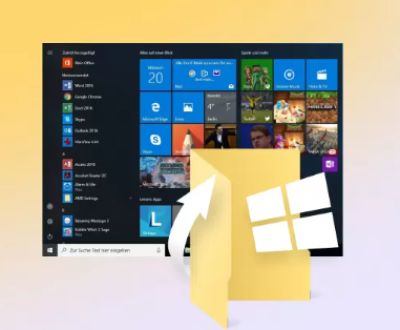Losing important files can be a frustrating experience, especially when it involves work-related documents like Excel files. Excel, a powerful spreadsheet application used in both personal and professional environments, stores valuable data that might not always be backed up. In such cases, it’s crucial to act quickly and use the appropriate tools to recover the deleted file.
1. Check the Recycle Bin
When you delete a file on a Windows system, it typically goes to the Recycle Bin before being permanently erased. This is one of the easiest and most immediate ways to recover deleted files.
Steps to Recover Excel File from the Recycle Bin:
Open the Recycle Bin: Double-click the Recycle Bin icon on your desktop to open it.
Search for the File: Look for your Excel file by either scrolling through or typing its name in the search bar.

Restore the File: Right-click on the file and select Restore. This will move the file back to its original location on your system.
If the file isn’t in the Recycle Bin, it might have been emptied or never reached the Bin in the first place. In that case, continue with the other methods below.
2. Use Microsoft Excel’s AutoSave and AutoRecovery Features
Microsoft Excel comes with an AutoSave feature that can automatically save your work at regular intervals, especially useful if your Excel file was closed unexpectedly due to a crash or if you forgot to save it.
Steps to Recover a File Using AutoSave/AutoRecovery:
Open Excel: Launch Microsoft Excel.
Check for AutoRecover Files: Once Excel is opened, look for a Document Recovery pane that might display recovered files. If you don’t see this, proceed to the next step.
Manually Search for AutoRecover Files:
Click File > Info > Manage Workbook.
Click Recover Unsaved Workbooks. This will show a list of unsaved files that Excel automatically saves at set intervals.
Open the File: If the file you want to recover is listed, click on it to open and save it in the desired location.
AutoSave Location:
The AutoSave and AutoRecovery files are typically stored in:
C:\Users\[YourUserName]\AppData\Local\Microsoft\Office\UnsavedFiles\
Check that location on your computer if the AutoRecovery pane doesn’t appear.
3. Check Previous Versions in Windows
Windows operating systems have a feature called Previous Versions, which automatically creates restore points for files that are changed or updated. If your Excel file was part of a folder that had its previous versions backed up, you can restore it from there.
Steps to Recover a File Using Previous Versions:
Navigate to the Folder: Open the folder where the Excel file was originally located.
Right-Click on the Folder: Right-click the folder that contained the deleted Excel file and select Restore Previous Versions.
Select the Version: A list of available previous versions of the folder will be shown. Choose a version from a date when the file was still present.
Restore the File: Click on Restore to recover the entire folder or manually copy the specific Excel file from the preview.
This method works only if you have the System Restore feature enabled on your system and if the file was previously saved in a folder that had restore points created.
4. Use Windows File History (If Enabled)
If you have File History enabled on your Windows computer, it periodically saves copies of files, allowing you to recover versions of files you’ve deleted.
Steps to Recover Excel Files Using File History:
Open the Folder Containing the File: Navigate to the folder where the Excel file was last saved.
Enter File History Mode: Right-click inside the folder and select Restore previous versions. Alternatively, you can open Control Panel > System and Security > File History.
Restore the File: Browse through the different versions of the folder to find the Excel file you want to recover. Select it and click Restore.
If File History wasn’t enabled, you might not have any previous versions available.
5. Recover Excel File from OneDrive or Other Cloud Services
If your Excel file was saved on a cloud storage service like OneDrive, Google Drive, or Dropbox, it is likely recoverable through their built-in file versioning and trash bin features.
Steps to Recover Excel File from OneDrive:
Visit OneDrive: Open your web browser and go to the OneDrive website (onedrive.com).
Sign in to Your Account: Use your Microsoft account to log in.
Go to the Recycle Bin: On the left-hand menu, click on Recycle Bin.
Restore the File: Find the deleted Excel file and select it. Click Restore to recover the file.
Steps to Recover from Google Drive:
Visit Google Drive: Open Google Drive in your web browser (drive.google.com).
Go to the Trash Folder: On the left side, click on Trash.
Restore the File: Right-click the deleted Excel file and select Restore.
Steps to Recover from Dropbox:
Visit Dropbox: Go to the Dropbox website (dropbox.com) and log in.
Navigate to Deleted Files: Click on Files and then select Deleted Files.
Restore the File: Locate your Excel file, click the checkbox next to it, and then click Restore.
Using cloud services gives you additional recovery options because these platforms retain deleted files for a certain period, often up to 30 days.
6. Use Data Recovery Software
Panda Assistant is a powerful and user-friendly data recovery software designed to help users recover lost or deleted files from various storage devices, including hard drives, SSDs, USB drives, and memory cards. Whether you’ve accidentally deleted important documents, lost files due to a system crash, or need to retrieve data from a damaged storage device, Panda Assistant offers an effective solution.
With an intuitive interface, Panda Assistant simplifies the recovery process, making it accessible even to those with limited technical expertise. The software supports a wide range of file types, including photos, videos, documents, and emails, and provides advanced scanning algorithms to ensure a high success rate for data recovery. It also offers features like deep scanning for more complex recovery situations and preview options to check recoverable files before restoring them.
Additionally, Panda Assistant allows for recovery from various scenarios such as accidental deletion, formatted drives, corrupted partitions, and more. The software also provides a secure method for restoring files, ensuring that the recovered data remains intact and undamaged.
7. Preventing Future Data Loss
While it’s always possible to recover deleted files, prevention is the best strategy to avoid the headache of losing important documents.
Here are some tips to prevent losing Excel files in the future:
Use Cloud Storage: Services like OneDrive, Google Drive, and Dropbox automatically sync your files and store backups in the cloud.
Enable File History or System Restore: Ensure that Windows’ File History feature is enabled to create backup copies of your files.
Use Excel’s AutoSave Feature: Turn on AutoSave in Excel to automatically save files at regular intervals.
Back Up Regularly: Consider using external drives or online backup services to store copies of your important files.
About us and this blog
Panda Assistant is built on the latest data recovery algorithms, ensuring that no file is too damaged, too lost, or too corrupted to be recovered.
Request a free quote
We believe that data recovery shouldn’t be a daunting task. That’s why we’ve designed Panda Assistant to be as easy to use as it is powerful. With a few clicks, you can initiate a scan, preview recoverable files, and restore your data all within a matter of minutes.
Subscribe to our newsletter!
More from our blog
See all postsRecent Posts
- How to recover accidentally deleted files 2025-07-01
- How do i recover a file i accidentally deleted 2025-07-01
- How to recover an accidentally deleted file 2025-07-01

 Try lt Free
Try lt Free Recovery success rate of up to
Recovery success rate of up to









